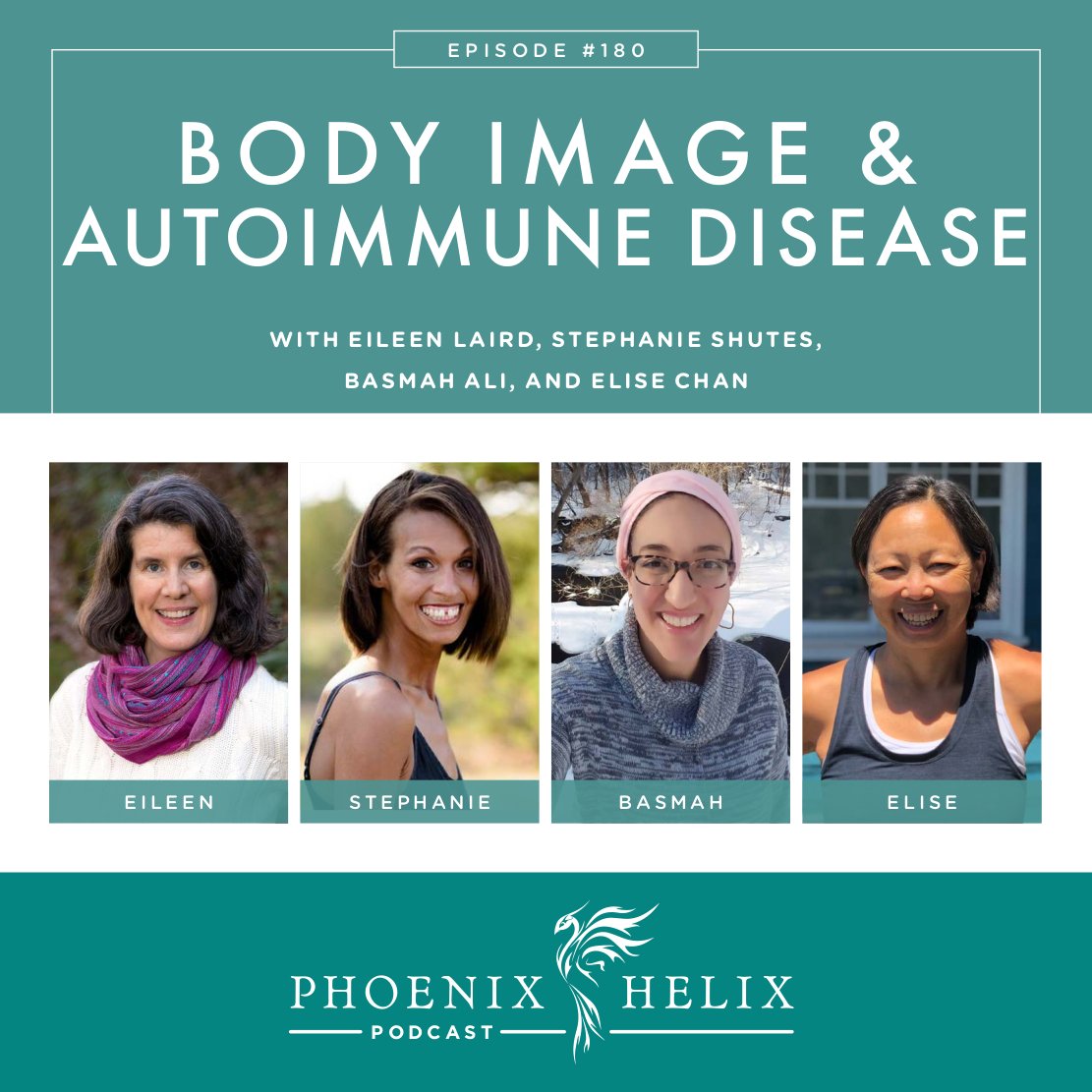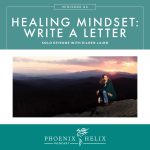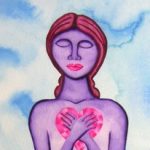How We See Ourselves & How Others See Us
With an autoimmune diagnosis, we are told that we have a disease for which there is no cure. It can be shocking and immediately change how we see ourselves. It’s not uncommon to feel betrayed by our bodies. Symptoms can also dramatically change our abilities, impacting careers, hobbies, and roles within families. Many of us go through an identity crisis – no longer feeling like the person we were before. Then there’s the impact of having a visible vs. invisible illness. Some autoimmune diseases change our physical appearance and how others interact with us. Whereas others have symptoms that are hidden, often inspiring disbelief in the pain that can’t be seen. Today, four people with autoimmune disease (including myself) share our experiences with how our body image has changed since diagnosis.
Listen to the Show
- Subscribe to my podcast through your favorite podcast app: iTunes, Stitcher, Google, TuneIn, Spotify, Amazon, etc.
- You can also listen to the episode right here through the player below, and if you subscribe to my newsletter you’ll get notified of future episodes.
Podcast: Play in new window | Download
Show Notes
- Intro (0:00)
- Meet Our Guests
- Stephanie Shutes has scleroderma.
- Basmah Ali has Crohn’s disease.
- Elise Chan has alopecia, eczema, and osteoarthritis.
- Eileen Laird (your host) has rheumatoid arthritis.
- Thank You To Our Podcast Sponsor – Luminance Skincare (1:49)
- This week, I’m highlighting their sunscreen and after-sun serum. Their sunscreen is made with only 3 ingredients: red raspberry seed oil, sunflower seed oil, and apricot kernel oil. The red raspberry seed oil absorbs the sun’s harmful energy before it penetrates the surface of your skin. This product has 120 positive reviews from customers, amazed that it works so well! Their after-sun serum is designed to soothe burns. Our goal with sunshine is to get some vitamin D without burning our skin. But sometimes those plans go awry, especially if we’re at the beach or the pool all day and forget to reapply sunscreen. Luminance’s after-sun serum is designed to help heal sunburns. Tamanu oils accelerate healing. St. John’s Wort takes the sting away, and chamomile soothes the burn.
- Whereas conventional skincare products are full of chemicals that can hurt our bodies, Luminance is made from ingredients that nourish. Their products are natural, organic, wildcrafted, non-GMO, and gluten-free (and they’re even made in a dedicated gluten-free facility). They’re also handmade in small batches within the United States.
- They have a complete face and body care line, including cleansers, toners, moisturizers, masks, acne serum, sunscreen, haircare, and more.
- Place an order here, and use the code HELIX for 10% off your first order.
- What Symptoms Have Affected Your Body Image the Most? (3:59)
- Stephanie: With scleroderma, her body produces too much collagen and it hardens her skin. She has experienced permanent changes. Her hands are visibly disfigured. There’s also skin discoloration on her hands and forehead. The features of her face have changed as well: her nose is pointier, her lips are thinner, and her ears are flatter against her head. She also has a limp. She used to be an athlete, playing and coaching college basketball. She had a grace of movement, whereas now she needs to plan her movements. It’s impacted her identity – going from athletic to disabled. She still coaches high school basketball, but she can no longer model the movements. She’s had to find new ways to coach, using words instead of her body.
- Basmah: With Crohn’s disease, the biggest symptom is diarrhea due to malabsorption. This happens during autoimmune flares and also times of high anxiety. During her worst flare, she lost so much weight that you could see her bones bodywide, her skin was extremely pale, and she was too weak to walk without resting every few steps. She also lost half of her hair. When she first started regaining her health, her weight went to the belly first, and she looked pregnant. Now her health is much improved and those visible symptoms are mostly gone, but she still has a hard time looking at herself in the mirror. Crohn’s disease has taken a toll on her self-image.
- Elise: Alopecia flares are very noticeable, causing visible bald patches on her scalp, and the neighborhood children will point and ask her why. When she has an eczema flare, it affects her hands and is therefore visible as well. If she scratches her hands, they’ll bleed and weep. When that’s happening, nobody wants to touch her, and she hesitates to touch anything herself. She feels very self-conscious and tries to hide her hands during flares.
- Eileen: With rheumatoid arthritis, the main symptom is joint pain. It’s often invisible, and I can be in extreme pain on the inside yet other people can’t see it. It becomes visible when a flare is disabling. For example, foot flares have caused me to limp, wrist flares have required a brace, and shoulder flares have sometimes needed a sling. Those are the moments my illness becomes visible to everyone. However, like Elise, I often find myself trying to hide symptoms in public. The biggest change to my body image is that prior to developing RA, I took my body’s strength, abilities, and health for granted. Now, I don’t. There’s a built-in unpredictability of RA flares vs. remission. The silver lining is that when RA temporarily takes away an activity I love, I’m filled with profound gratitude if I get it back.
- Visible vs. Invisible Illness – How Do Others Respond to You? (11:58)
- Basmah: Her most visible symptoms are weight losses and gains, depending on flares vs. remission. People feel they have the right to comment on her appearance, and while they often mean well, it has the opposite effect. It contributes to a negative body image. She feels most seen and accepted by other people with IBD who understand her experience themselves. They never comment on her appearance, and they see her as a person rather than her disease. Her first experience being completed immersed in this community was a Crohn’s & Colitis Half Marathon Team Challenge in Ireland. It was wonderful. When she returned home, she sought online groups where she could feel that same acceptance and support. Two of the most valuable ones for her have been Girls with Guts and the Paleo AIP online community. Now, part of her mission is to share her story online, giving people a lens into the inner experience of living with IBD – it’s more than what you see on the outside.
- Stephanie: She’s a middle school teacher, and her students have always been amazing. Her first symptom was Raynaud’s and her fingers would turn purple or white in the winter. If her students noticed the discoloration, they would hold her hands to try to warm them up. Now, years later, she’s lost much of her hand function and needs help passing out papers and picking things up. She’s upfront with her students, and they’re happy to help. Strangers, on the other hand, respond to her very differently. She has a disabled parking sticker because it can be difficult for her to walk. However, when she first gets out of the car, strangers simply see a woman who is 6’1″ and looks healthy. People can be very judgmental, making her feel like she needs to prove that she has “earned” disabled parking. Through her own health journey, she’s learned that no one has the right to comment on anyone else’s appearance. She no longer does that, and she teaches her son this value as well.
- Elise: When the children in her neighborhood asked her about her hair loss from alopecia, they weren’t trying to be mean. They were just curious. And while she did try to hide her symptoms as much as possible in the workplace, it was also a formal environment that didn’t encourage personal questions, so that was a silver lining. No one ever asked her about her symptoms. She’s learning that most of the judgment comes from herself. For example, she’s been practicing yoga for 20 years, and the arthritis in her thumb and big toe mean that she can no longer do certain poses without adaptations, so she needs to interrupt the class to ask the teacher for help modifying the pose. That always embarrasses her and makes her feel “old”. The teachers always respond positively, and none of her fellow students behave judgmentally, but she remembers feeling judgmental of others who did this in the past. Her health issues are teaching her compassion for others, and she realizes she needs to extend that compassion to herself.
- Eileen: Interactions with people change based on whether my symptoms are visible or invisible. I experienced severe and rapid onset of rheumatoid arthritis and went from zero symptoms to being disabled within 6 months. That was the most excruciating pain I’ve ever felt, yet people couldn’t see it. So, if I was out in public and saw someone I knew, it was a terrifying moment because people would either shake my hand or hug me, and both were painful. It was also emotionally painful, because it took away the joy of meeting people, and the comfort of hugs. Now, my health is much better and I have long periods of remission, but a mark of health for me is the ability to hug someone without pain. The time my illness was most visible happened in 2020, when stress escalated my symptoms, and I ended up in a wheelchair for 3 months. That was always my greatest fear, so facing it wasn’t easy. It was also the first time people saw my symptoms so clearly. I learned a lesson from my mother’s experience. She had spent the final decade of her life in a wheelchair, and she always felt invisible. People would speak to the person pushing her chair rather than her. Age compounded the way people responded to her, but the wheelchair played a big role. So, I made sure I looked people in the eye and projected a strong and happy energy, and people responded positively. I wanted them to see me, not just the wheelchair.
- Resource: Ep. 124 – The Best and Worst Things People Say When You Have Autoimmune Disease.
- Thank You To Our Podcast Sponsor – Functional Nutrition Alliance (36:25)
- Full Body Systems is their internationally acclaimed, 10-month online functional nutrition immersion training program.
- It’s designed by world-renowned educator, Andrea Nakayama. Many of you know her as one of my most popular podcast guests. Her unique way of working with patients often leads to results where other practitioners hit dead ends. This program teaches you to do the same.
- If you’re already trained as a health coach, nutritionist, or medical practitioner and want to more effectively help your clients break through healing plateaus, this class is for you!
- And if you’re an aspiring practitioner just getting started, this might be the only training you need.
- You’ll gain detailed knowledge of all the systems in the body, how they interact, how problems develop, and how to personalize diet and lifestyle recommendations for each unique client.
- Enrollment is currently open. To learn more, visit FxNutrition.com/Eileen.
- The Spectrum of Self-Love, Self-Hate, and Self-Acceptance (37:52)
- Elise: She’s been hard on herself for a long time. First, the multiple diagnoses were overwhelming. The Paleo Autoimmune Protocol was also challenging – she felt like she would never be able to do it “right”. Having to tell her triathlon coach and her friends about her food needs also felt awkward at first. But overall, people have been supportive. She’s moving toward a place of self-acceptance. She practices yoga, Buddhism, and meditation, and they teach accepting yourself and your situation without fighting so hard against it. She’s getting there, and she’s also developing more compassion and acceptance of other people and their situations at the same time.
- Basmah: She was diagnosed with Crohn’s disease when she was 18 years old, and she’s now 34. She hated her diagnosis. She wondered why she was being punished. She felt angry and isolated and spent the first 10 years in denial. What helped the most was a combination of counseling, the paleo autoimmune protocol, acupuncture, weight lifting, sharing her story with others, and connecting more deeply with her Muslim faith. That improved her health and also her self-image. She feels that she’s in the middle of the spectrum right now, at self-acceptance. She’s working towards self-compassion. Like Elise, she’s always been really hard on herself. She hopes to use her experience to help others. She’s training to be a wellness coach, with the goal of helping kids with chronic illness.
- Stephanie: Like Basmah, she also experienced denial after her diagnosis. As an athlete, she was used to pushing through pain. She tried to do that with chronic illness, and it took years to accept that her illness wasn’t going away. She’s learned that self-acceptance and self-love are a journey throughout a lifetime. Her first challenge with self-acceptance happened when she was 17 years old. She has a gap between her front teeth, but she never knew that was unusual until two children thought she had lost her front tooth. She was suddenly self-conscious about something that had always been a part of her. She needed to decide whether she would hide it, fix it, or accept it, and she chose acceptance. That experience helped her later in life when scleroderma made changes to her body. She mostly lives in a place of self-acceptance now, and even self-love. It’s a sliding scale, and there are times where it’s harder than others. The support of family and friends helps a lot. The AIP has helped, too, by reducing her pain, improving her outlook, and connecting her to an online community she loves. She also tries to remember that judgmental people are rare. Most people respond with love and compassion. If she operates out of fear, she misses out.
- Eileen: My denial manifested in a belief that I could (and should) be able to cure myself, that RA was a personal failure. Failing at that mission was when I started dipping my toes into unconditional self-acceptance – accepting reality and accepting myself within a reality I wouldn’t have chosen. During flares, I still experience a wide range of emotions including grief and anger, and I let myself feel everything I need to feel. When I’m hurting, I try to treat myself as if I was my own child, and that taps into a well of self-compassion that’s both sweet and deep. I think the greatest gift that RA has given me is faith in my own resilience – experiencing setbacks, and striving to love myself through them rather than struggle through them.
- Resources:
- Outro (56:28)
- I’m so grateful to my guests for sharing so openly about such a personal topic. You can connect with all of us on Instagram. Stephanie is sheshutes_accesiblydisabled. Basmah is thisimmunelife. Elise is elise.chan.wang. Eileen is phoenix.helix.
- Eileen (your podcast host) is the author of multiple books, written to help people thrive with autoimmune disease. Learn more on the Books Page.
- If you like this podcast, follow or subscribe through your favorite podcast app. You can also subscribe to Eileen’s biweekly newsletter.
- Check out the entire archive of podcast episodes.
You May Also Be Interested In
Spreading the Word
If you like the podcast, please leave a positive review in iTunes. It would mean the world to me, and also helps others find the podcast. Here are some quick instructions using your iPhone:
- If you are already subscribed to my podcast: (1) Click the purple podcast icon. (2) At the bottom of the screen, click Library. (3) At the top of the screen, click Shows. (4) Click the Phoenix Helix podcast image. (5) Scroll down the page, and you’ll see Ratings and Reviews. Scroll down a little bit more and click on Write a Review. This will bring up the review screen. Tap 5 stars (if you love the podcast), and then click in the title box, and it will bring up the keyboard. Enter a title and short review. (6) Click Send in the upper right corner. (7) Thank you! Positive reviews give the podcast a higher search ranking in iTunes, helping people find it and letting them know it’s a quality podcast and worth their time to listen.
- If you haven’t subscribed to my podcast: (1) Click the purple podcast icon. (2) In the lower right corner, click the magnifying class. (3) Type Phoenix Helix in the search box. (4) Click the podcast cover in the Show list. (5) If you’d like to subscribe, click the + sign at the top of the screen. (6) To write a review, scroll down the page, and you’ll see Ratings and Reviews. Scroll down a little bit more and click on Write a Review. This will bring up the review screen. Tap 5 stars (if you love the podcast), and then click in the title box, and it will bring up the keyboard. Enter a title and short review. (7) Click Send in the upper right corner. (8) Thank you! Positive reviews give the podcast a higher search ranking in iTunes, helping people find it and letting them know it’s a quality podcast and worth their time to listen.








